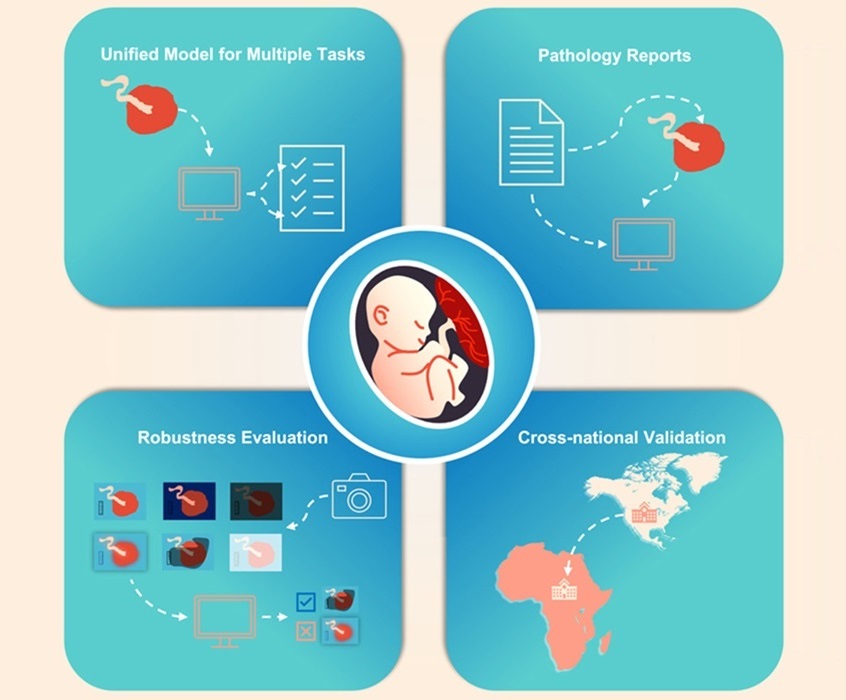AI Tool Analyzes Placentas at Birth to Accurately Detect Health Risks
Posted on 16 Dec 2024
The placenta is crucial to the health of both the pregnant individual and the baby during pregnancy, but it is often not examined thoroughly after birth, especially in areas with limited medical resources. This oversight can prevent early detection of issues that could lead to complications, potentially missing opportunities for early intervention to improve outcomes for both mother and child. To address this, a new tool combining computer vision and artificial intelligence (AI) has been developed, which could help clinicians rapidly evaluate placental health at birth and improve neonatal and maternal care.
Researchers from Northwestern University (Evanston, IL, USA) and Penn State (University Park, PA, USA) have introduced a computer program named PlacentaVision. This tool analyzes a simple photograph of the placenta to identify abnormalities linked to infections and neonatal sepsis, a severe condition that affects millions of newborns globally. Early identification of infections through tools like PlacentaVision may allow clinicians to take swift action, such as administering antibiotics to the mother or baby and closely monitoring the newborn. According to the researchers, PlacentaVision is designed for use across diverse medical populations.

In their study, published in the journal Patterns, the researchers employed cross-modal contrastive learning, an AI technique that aligns and interprets the relationship between different types of data—visual (images) and textual (pathological reports). They compiled a large and varied dataset of placental images and associated pathological reports spanning 12 years, using this information to train the program to make predictions from new images. The team also developed various image modification strategies to simulate different conditions under which the photos were taken, helping to evaluate the model's robustness.
The outcome was PlacentaCLIP+, a powerful machine learning model that can accurately analyze placental images to detect health risks. The model was cross-nationally validated to ensure consistent performance across different populations. PlacentaVision is designed to be user-friendly, with potential applications through a smartphone app or integration into medical record systems, allowing doctors to receive immediate feedback post-delivery. Moving forward, the team plans to enhance the tool by incorporating additional placental features and clinical data, improving its predictive capabilities while also contributing to research on long-term health outcomes. They also aim to test the tool in various hospitals to ensure its functionality in different settings.
“Placenta is one of the most common specimens that we see in the lab,” said study co-author Dr. Jeffery Goldstein, director of perinatal pathology and an associate professor of pathology at Northwestern University Feinberg School of Medicine. “When the neonatal intensive care unit is treating a sick kid, even a few minutes can make a difference in medical decision making. With a diagnosis from these photographs, we can have an answer days earlier than we would in our normal process.”
“In low-resource areas — places where hospitals don’t have pathology labs or specialists — this tool could help doctors quickly spot issues like infections from a placenta,” added Yimu Pan, lead author on the study. “In well-equipped hospitals, the tool may eventually help doctors determine which placentas need further, detailed examination, making the process more efficient and ensuring the most important cases are prioritized.”














